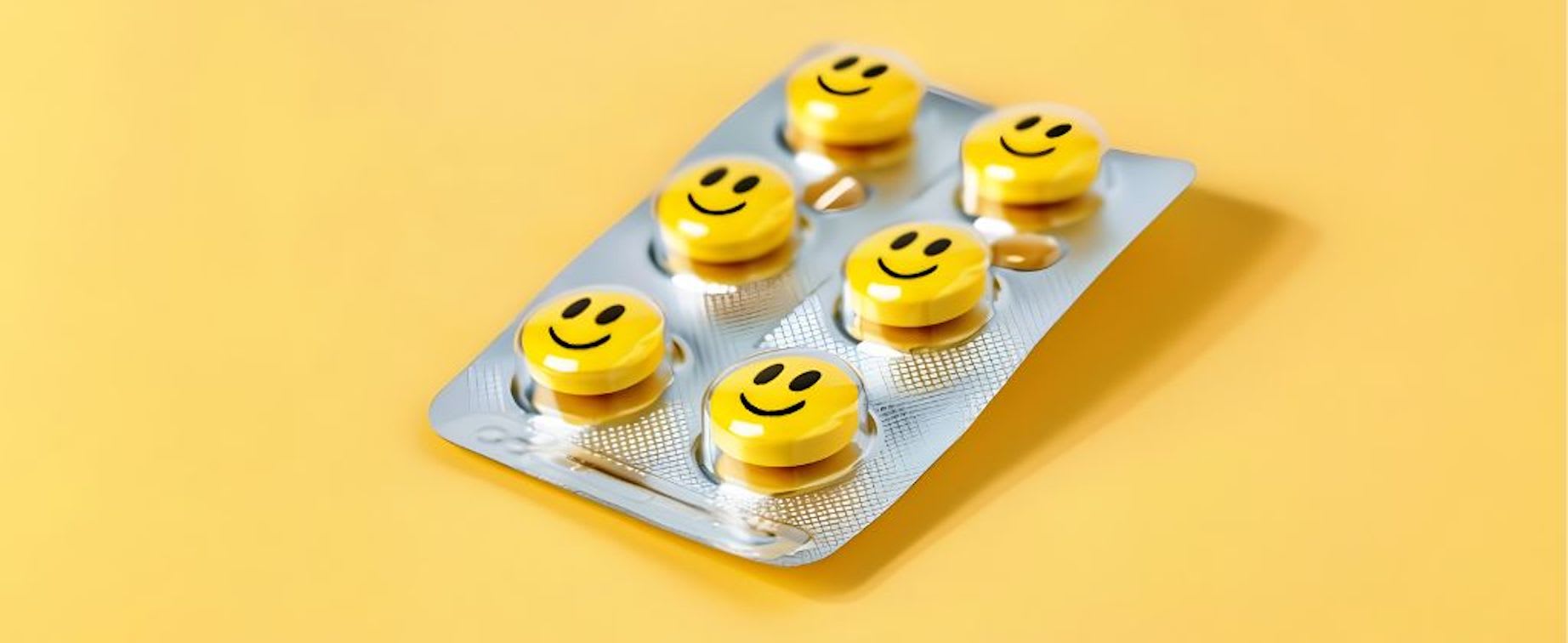Generalized Anxiety Disorder (GAD) isn’t just the occasional jitters before a job interview or a big presentation. It’s a chronic mental health condition that quietly eats away at people’s ability to function in daily life. With its mix of emotional overload, physical tension, and mental exhaustion, GAD can feel like you're always bracing for impact.
This article breaks down what GAD looks like, what causes it, and how treatment options, from therapy to SSRIs for anxiety, can make a real difference. We’ll also tackle one of the more common dilemmas people face when exploring medication: choosing between sertraline vs. escitalopram, two of the most widely prescribed SSRIs for anxiety.
What is GAD?
GAD stands for Generalized Anxiety Disorder, a mental health condition marked by excessive and persistent worry. The keyword here is “excessive.” Everyone worries about money, work, health, or relationships sometimes. But with GAD, those worries are hard to control, happen more days than not, and stick around for at least six months straight. 1
According to the Diagnostic and Statistical Manual of Mental Disorders (DSM-5), to be diagnosed with GAD, a person needs to experience this ongoing worry along with at least 3 other symptoms, such as:
- Fatigue
- Muscle tension
- Restlessness
- Sleep disturbances
- Irritability
- Difficulty concentrating 1
GAD isn’t just overthinking; it’s a nonstop state of mental tension that can take a real toll on both your body and your brain. On top of that, it often shows up alongside depression, making symptoms more intense and harder to manage.
Common Signs and Symptoms of GAD

Symptoms of GAD tend to fall into three categories: cognitive, physical, and behavioral.
Cognitive signs include:
- Constant worry about many areas of life, like work, health, relationships, safety, and the future
- Thoughts like “Something bad is going to happen,” or “I can’t handle this”
Physical symptoms can look like:
- Trouble sleeping
- Muscle aches or tension
- Headaches or stomach aches
- Feeling keyed up, jittery, or lightheaded
- Shortness of breath or frequent bathroom trips
Behavioral signs often involve:
- Avoiding things that might trigger anxiety, like watching the news
- Over-preparing for situations “just in case” something goes wrong
- Seeking constant reassurance from others 2
For some people, GAD starts young. The median age of onset is around 30, but it can begin earlier. 3
What Causes GAD?
There isn’t a single cause of GAD. Instead, it’s more like a cocktail of genetics, biology, and environment.
You may be at a higher risk if:
- You have a family history of anxiety
- You’ve experienced trauma or abuse
- You’re female
- You have other chronic physical or mental health conditions
- You use substances like alcohol or caffeine regularly 2 3
While occasional anxiety is normal, GAD doesn’t have an “off” switch. Even during calm periods, the anxiety can still simmer in the background.
How is GAD Diagnosed?
Diagnosing GAD involves a full picture of a person’s history and symptoms, typically assessed by a primary care doctor, psychologist, or psychiatrist. Medical professionals may also rule out physical conditions that can mimic anxiety. 3
One common screening tool is the GAD-7 questionnaire. It’s a simple, seven-question self-assessment used by clinicians to evaluate the severity of anxiety symptoms over the past two weeks. 3
If the symptoms are interfering with your ability to work, maintain relationships, or live your day-to-day life, that’s a strong signal that treatment may be needed.
Anxiety Treatment Options

There are two main branches of anxiety treatment for GAD: psychotherapy and medication. For many people, the best results come from using both at the same time. 3
Psychotherapy
Cognitive Behavioral Therapy (CBT) is the gold standard when it comes to treating GAD. This type of therapy helps people recognize harmful thought patterns and gradually replace them with more helpful ones. It’s not about “just thinking positive,” it’s about training the brain to stop automatically assuming the worst. 1
Another growing option is Acceptance and Commitment Therapy (ACT), which focuses on accepting your thoughts without judgment and living in a way that aligns with your values, even if anxiety is along for the ride. 1
In some cases, therapy alone is enough. But for moderate to severe GAD, medications often provide a much-needed boost.
SSRIs for Anxiety Treatment
When it comes to medication for GAD, selective serotonin reuptake inhibitors (SSRIs) are usually the first stop. SSRIs for anxiety work by adjusting serotonin levels in the brain, which helps regulate mood and anxiety. 3
Common SSRIs for anxiety treatment include:
- Sertraline (Zoloft)
- Escitalopram (Lexapro) 3
SSRIs don’t work overnight. It can take about 4 weeks or longer to feel their full effects. During that time, side effects like headaches, nausea, or trouble sleeping may show up, though these often settle down as your body adjusts. 3
Sertraline vs. Escitalopram: Which One is Better?
When comparing SSRIs for anxiety, two names consistently rise to the top: sertraline vs. escitalopram. A large network meta-analysis involving 87 randomized trials and more than 12,000 patients with panic disorder found that these two medications offered the greatest benefit with the fewest risks. 4
The analysis looked at several classes of medications used for panic disorder, including tricyclic antidepressants (TCAs), benzodiazepines, and multiple SSRIs. While TCAs and benzodiazepines were also effective, they came with a higher risk of side effects. SSRIs, on the other hand, were not only effective but also had a more favorable safety profile. 4
Among the SSRIs evaluated, sertraline and escitalopram stood out as the most effective treatments for panic disorder and were associated with fewer side effects compared to other SSRI options. 4
So, if you’re weighing sertraline vs. escitalopram as part of your anxiety treatment plan, this evidence supports starting with either one, especially if minimizing side effects is a priority. They strike a solid balance between effectiveness and tolerability, making them first-line choices in treating panic-related symptoms. While this study focused on panic disorder, the overlap in medication use across anxiety disorders makes these findings highly relevant for GAD as well.
Ultimately, there’s no one-size-fits-all answer here. Deciding between sertraline vs. escitalopram often comes down to how your body reacts and what your provider thinks will suit your specific situation.
Lifestyle and Supportive Strategies
While medication and therapy do the heavy lifting, there are plenty of day-to-day habits that can support anxiety treatment:
- Cut back on caffeine and alcohol
- Stick to a regular sleep schedule
- Try mindfulness, deep breathing, or yoga
- Exercise regularly
- Avoid doomscrolling or excessive news exposure
- Join a support group (either online or in person)
These healthy habits aren’t a substitute for treatment, but they do strengthen the foundation for long-term recovery.
Conclusion
Generalized Anxiety Disorder can feel like a constant mental tug-of-war, draining your energy and interfering with daily life. But it’s not something you just have to live with. With the right treatment, often a mix of therapy and medications like SSRIs for anxiety, people with GAD can absolutely find relief.
Cognitive Behavioral Therapy remains the top psychotherapy option, helping people reshape anxious thought patterns. On the medication side, choosing between sertraline vs. escitalopram depends on individual needs, side effect profiles, and how your body responds. Both are solid options, and neither is inherently better — it’s about what works best for you.
Living with GAD might involve ongoing management, but it doesn’t have to define you. With education, support, and a treatment plan that fits, people with GAD can reduce their symptoms, build resilience, and get back to a life that feels more balanced and in control.
The content in this article is intended for informational purposes only. This website does not provide medical advice. In all circumstances, you should always seek the advice of your physician and/or other qualified health professionals(s) for drug, medical conditions, or treatment advice. The content provided on this website is not a substitute for professional medical advice, diagnosis, or treatment.






